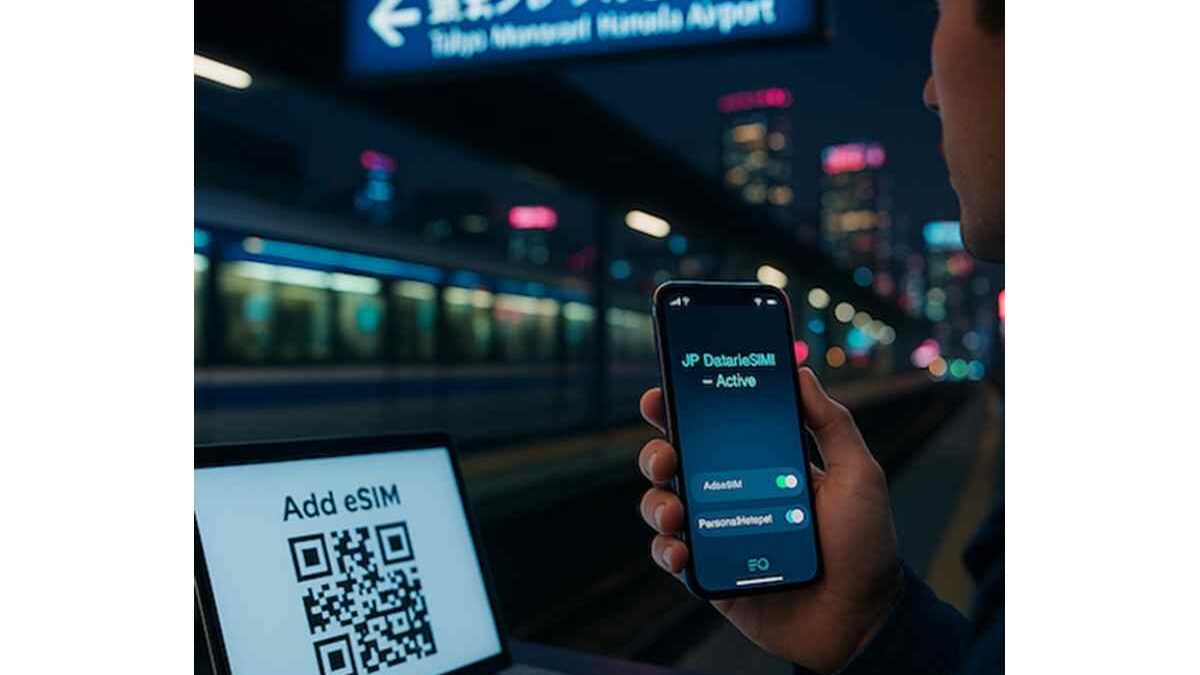You step off at HND, flick off Airplane Mode, and Maps snaps to the monorail platform before your jet lag can protest. That’s the promise of a pre-installed eSIM: ship your connectivity like code—tested, deployed, and rollback-ready.
Table of Contents
Under the Hood (eUICC in 90 Seconds)
An eSIM profile lives inside the eUICC—a secure element soldered to your phone’s board. Provisioning uses the Remote SIM Provisioning flow: your device’s LPA (Local Profile Assistant) authenticates to the provider’s SM-DP+ server, pulls an encrypted profile (IMSI, keys, APN), and installs it into the vault. No plastic tray, smaller attack surface, and remote revoke if your phone disappears. Translation: less kiosk time, more ramen time.
Will My Phone Work? (Quick Matrix)
| Platform | Models (typical) | Dual eSIM? | Notes |
| iPhone | 12 → current | Yes | Re-check iMessage registration after activation. |
| Pixel | 5 → current | Varies by gen | Clean SIM Manager; DSDS works well. |
| Galaxy S | S20 → current | Model dependent | Ensure VoLTE is enabled; some carriers toggle it. |
Make sure your handset is carrier-unlocked.
Three-Minute Pre-Flight Setup
- Buy plan → receive QR by email.
- Settings → Cellular/Mobile → Add eSIM → scan → label it JP-Data.
- Set JP-Data as Mobile Data; keep your U.S. line for calls/SMS (bank 2FA).
- Toggle Data Roaming for JP-Data only.
- Test: open a site on Wi-Fi off, then toggle Hotspot to confirm tethering works.
For plan types, coverage notes, and a step-by-step gallery, find out more.
Benchmarks You Can Reproduce (Shinjuku Edition)
- Throughput: Run iperf3 -R to a nearby public server outside peak commute; log 5 runs, capture median DL/UL.
- Latency under load: ping during a small curl –limit-rate to simulate map tiles.
- Underground handoffs: Start a continuous ping at street level, ride the Metro one stop, note packet loss on entry/exit.
- Battery curve: 30-minute turn-by-turn nav with screen at 60% and 5G→4G fallback; check drain with Battery Historian or iOS Battery settings.
Expect strong 5G on surface streets near major hubs (Shibuya/Shinjuku), graceful 4G fallbacks in stations and older tunnels.
App Stack for Tech Travelers
- Transit & tickets: Suica/PASMO in Apple/Google Wallet, JR apps for seat reservations.
- Utilities: Google Translate (camera OCR for menus), offline maps (download Tokyo + Kyoto tiles), earthquake alert app.
- Workflows: Shared note (checklists, JR car/seat numbers), expense tracker with auto-scan receipts, password manager for hotel portals.
- Media & uploads: Shoot 1080p60 for quick posts; queue RAWs for hotel Wi-Fi.
Data Options at a Glance
| Option | Setup | 7-Day Cost (est.) | Pros | Cons |
| U.S. carrier day pass | None | High | Familiar | Expensive daily cap |
| Airport physical SIM | 30–45 min | Medium | Local rates | Queue + tray pin |
| Pocket Wi-Fi | Pick up/return | Medium | Shareable | Extra gadget/battery |
| eSIM (pre-install) | ~3 min | Low | Instant, keep U.S. number, hotspot | Needs compatible phone |
Troubleshooting in the Wild
- Data ok, iMessage weird? Toggle the U.S. line off/on for a minute, then re-register iMessage/FaceTime.
- VoLTE/VoWiFi missing: Check carrier settings; some plans are data-only—use app calls (FaceTime, WhatsApp).
- No data after scan: Airplane Mode 10 sec → ensure JP-Data is the active data line → APN auto-filled → reboot.
Bottom Line
Preflight your eSIM like a deployment: verify, label, and log a quick test. You’ll hit the ground with tap-to-ride Suica, instant maps, and clean 2FA—all without a single queue. Sushi follows naturally.

